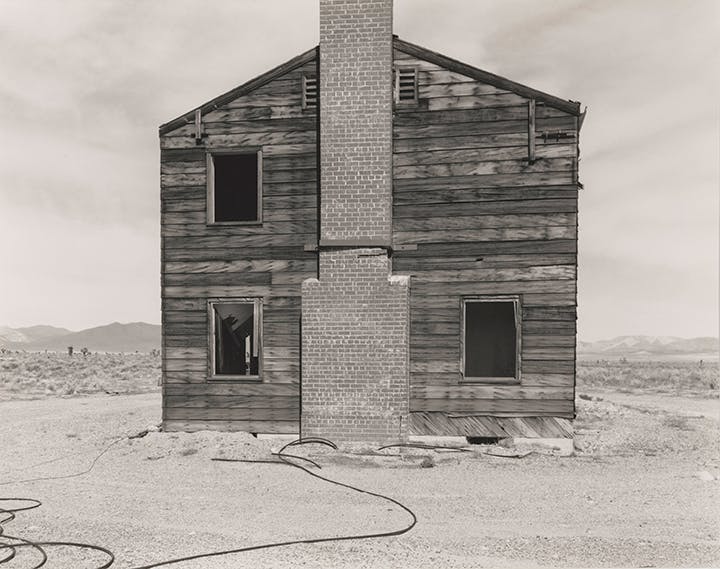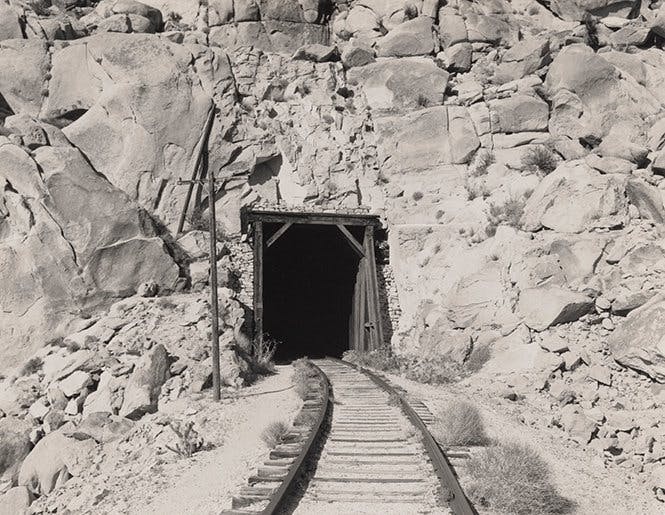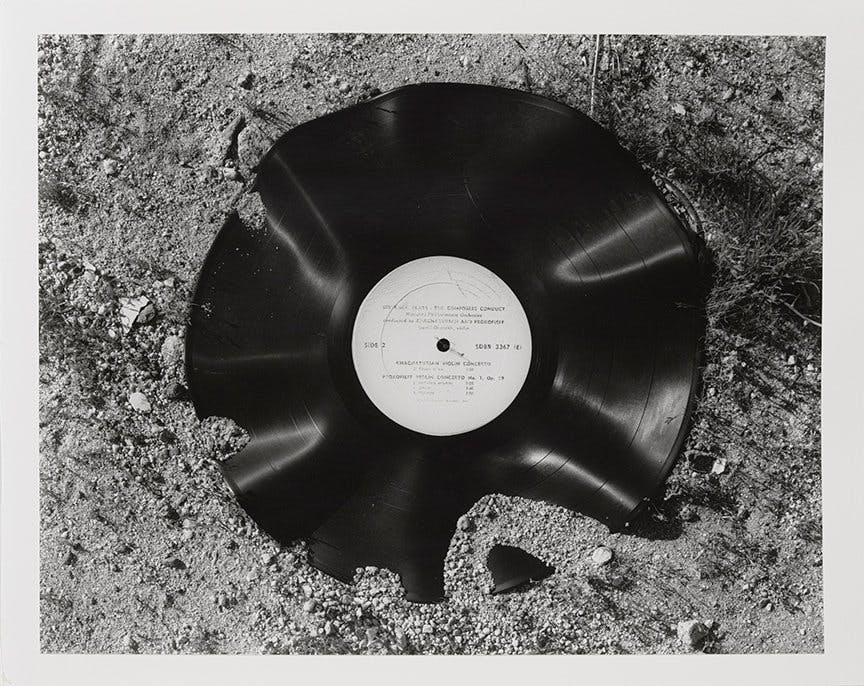
The archive of photographer Mark Ruwedel is at the center of a new exhibition at Stanford University’s Munger and Peterson Galleries inside the Cecil H. Green Library. Between: Artist Books, Albums, & Portfolios from the Mark Ruwedel Photography Archive at Stanford explores the wide-ranging influences in Ruwedel’s work and celebrates the interconnections between his growing archive at Stanford Libraries and the Libraries existing collections within Special Collections, the David Rumsey Map Center, and the Bowes Art & Architecture Library.
Although known primarily as a Western landscape photographer, Ruwedel’s photography is much more complex, in part due to a wide range of acknowledged influences. The linkage to 19th-century western expeditionary photography is strong, but equally significant is the foundational documentary practice of Walker Evans in the 1930s, the Conceptual and Post-Minimal artists of the 1960s and 70s, the 1970s New Topographics photographers, and many others.

The ‘between’ space Ruwedel occupies, and has mastered, will be the topic of In Conversation: the Mark Ruwedel Photography Archive at Stanford, a virtual talk on Thursday, May 27 at 2:30 pm. Ruwedel will be in conversation with Stanford Professor of History Emeritus Richard White, National Gallery of Canada Chief Curator of Photographs Emeritus Ann Thomas, and Stanford Libraries Photography Curator Peter Blank as they explore Ruwedel’s unique photographic practice and the rich research opportunities photographic collections offer.
“Ruwedel’s work is of particular value within a teaching institution such as Stanford University,” said Blank, who helped establish the Photography Initiative at Stanford Libraries. “It is the imprint of geological and human history seen in Ruwedel’s imagery that perhaps makes it most significant for use in such a varied and interdisciplinary research environment as Stanford’s.”
The Photography Initiative at Stanford is also creating a catalogue raisonné of Ruwedel’s artists’ books, albums, and portfolios that will continue to grow as more works arrive. The exhibition places these smaller, more approachable objects in direct conversations with related materials from Stanford Libraries’ holdings, including Andre Breton’s Nadja, Carleton Watkins’ mammoth albumen plates, and artist books by Edward Ruscha, Gordon Matta-Clark, Man Ray, and many others.

According to Blank, “It is the manner in which his distinctive intelligence avails itself of these influences is what makes Ruwedel such an intriguing artist. His innate intellectual curiosity results in rich image inventories accumulating from his photographic explorations of geological (Lake Bonneville), historical (the emergence of railroads in the West), and cultural (Hollywood, burlesque, Surrealism) phenomena,” adds Blank.
Between: Artist Books, Albums, & Portfolios from the Mark Ruwedel Photography Archive at Stanford will be on display until September 26, 2021. The exhibition is free, and per university COVID-19 protocols, access is restricted to current Stanford ID cardholders. Please visit the Libraries’ entry requirements and hours before visiting. An online exhibition and print catalog will be forthcoming.